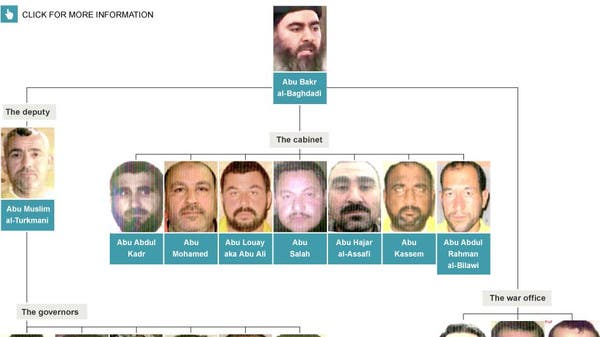Since the start of Operation Protective Edge, over 1,081 rockets have been fired towards Israel. Of them 845 hit Israel and 191 have been intercepted by the Iron Dome missile defense system. The IDF has targeted over 1,576 terror targets, with both naval and aerial capabilities.

Barack Obama praises this agreement, yet it has no teeth and is one-sided. Remember there was a cease fire agreement on November of 2012.
Egypt proposes cease-fire between Israel, Hamas
JERUSALEM — Egypt presented a cease-fire plan Monday to end a week of heavy fighting between Israel and Hamas militants in the Gaza Strip that has left at least 185 people dead, and both sides said they were seriously considering the proposal.
The late-night offer by Egypt marked the first sign of a breakthrough in international efforts to end the conflict.
Hamas’ top leader in Gaza confirmed there was “diplomatic movement,” while Israel’s policy-making Security Cabinet was set to discuss the proposal early Tuesday. Arab foreign ministers discussed the plan Monday night at an emergency meeting in Cairo, and U.S. Secretary of State John Kerry was expected in the region Tuesday.
Egypt’s Foreign Ministry announced the three-step plan starting at 9 a.m. (0600 GMT, 2 a.m. EDT) with a cease-fire to go into effect within 12 hours of “unconditional acceptance” by the two sides. That would be followed by the opening of Gaza’s border crossings and talks in Cairo between the sides within two days, according to the statement.
Gaza’s crossings should be opened for people and goods “once the security situation becomes stable,” according to a copy of the proposal obtained by The Associated Press.
Israel launched the offensive July 8, saying it was a response to weeks of heavy rocket fire out of Hamas-ruled Gaza. The Health Ministry in Gaza said 185 people, including dozens of civilians, have been killed, and more than 1,000 people wounded.
There have been no Israelis killed, although several have been wounded by rocket shrapnel, including two sisters, ages 11 and 13, who were seriously hurt Monday. Ahead of the Egyptian announcement, there appeared to be no slowdown in the fighting, with Hamas for the first time launching an unmanned drone into Israeli airspace that was shot down.
The violence followed the kidnappings and killings of three Israeli teenagers in the West Bank last month, as well as the subsequent kidnapping and killing of a Palestinian teenager in an apparent revenge attack, along with Israeli raids against Hamas militants and infrastructure in the West Bank.
Israeli officials have said the goal of the military campaign is to restore quiet to Israel’s south, which has absorbed hundreds of rocket strikes, and that any cease-fire would have to include guarantees of an extended period of calm.
Hamas officials say they will not accept “calm for calm.” The group is demanding an easing of an Israeli-Egyptian blockade that has ground Gaza’s economy to a standstill and that Israel release dozens of prisoners who were arrested in a recent West Bank crackdown following the abductions of the Israeli youths.
With the death toll mounting, both sides have come under increasing international pressure to halt the fighting.
Egypt Foreign Minister Sameh Shukri said there is “no alternative but return to the truce” of November 2012, and added that Egypt contacted all the parties, including the Palestinian leadership, different Palestinian factions, and Israeli authorities in addition to Arab and international parties. Such contacts led to shaping up the proposal which called for cease-fire.
“Egypt stresses the international responsibility toward what is happening in Palestine,” he said.
In a speech broadcast on Al-Jazeera, Ismail Haniyeh, a Hamas leader in Gaza, confirmed there was “diplomatic movement.”
“The problem is not going back to the agreement on calm because we want this aggression to stop,” he said. “The siege must stop and Gaza people need to live in dignity.”
An Israeli official said Prime Minister Benjamin Netanyahu would convene his Security Cabinet on Tuesday morning to discuss the proposal. He spoke on condition of anonymity because he was not authorized to talk to the media.
Naftali Bennett, a member of the Security Cabinet, said he would oppose the proposal, calling it “good for Hamas and bad for Israel.”
“A cease-fire at the present time shows the government’s weakness,” he said in a statement. “A cease-fire now will create a bigger campaign against the south of the country and more rocket attacks in another year.”
Egypt, the first Arab state to reach peace with Israel, often serves as a mediator between Israel and Hamas.
In the 2012 fighting, Egypt’s then-President Mohammed Morsi brokered a cease-fire, leveraging the influence his Muslim Brotherhood held with Hamas, its ally.
That deal included pledges to ease the blockade — promises that Hamas says were never kept. The blockade has greatly restricted movement through Gaza’s Rafah crossing with Egypt — the territory’s main gateway to the outside world — while Israel has restricted the flow of many goods, particularly much-needed construction materials, into Gaza. Israel says Hamas can use things like metal and concrete for military purposes.
Hamas has seen its position further weakened by last year’s military coup in Egypt that ousted Morsi. Egypt’s new leaders have cracked down on Hamas by nearly shuttering a network of smuggling tunnels along the border that were Hamas’ key economic lifeline — and supply route for its weapons.
Hamas seized control of Gaza in 2007 from the rival forces of Palestinian President Mahmoud Abbas. With the economy stagnant and Hamas unable to pay the salaries of its thousands of civil servants, the group recently agreed to back a unity government under Abbas’ leadership. But Hamas remains in firm control of Gaza.
Israel and Hamas, which is considered a terrorist group by the West, have battled many times. In the latest round, Israel carried out more than 1,300 airstrikes, along with attacks by naval gunships and artillery forces. Hamas fired hundreds of rockets into Israel.
Israeli military officials say the airstrikes knocked out roughly a third of Hamas’ rocket supply and delivered a blow to the group. It says that roughly 90 of the dead were wanted militants, and it has accused Hamas of using civilians as human shields.
A Hamas drone launched Monday into Israel marked the Islamic militant group’s latest effort to catch the Israeli military off-guard. But like the others, it had little impact on the battlefield.
Israel shot down the drone — named Ababil for a protective flock of birds mentioned in the Quran. Still, the drone represented a new level of sophistication for Hamas, and Israel said it was taking the threat seriously.
It was the first time Hamas has launched a drone into Israel, though military officials say they knew the group has had the technology for some time. Israeli airstrikes in the past have targeted what were believed to be drone facilities in Gaza.
“Hamas is trying everything it can to produce some kind of achievement, and it is crucial that we maintain our high state of readiness,” Israeli Defense Minister Moshe Yaalon said. “The shooting down of a drone this morning by our air defense system is an example of their efforts to strike at us in any way possible.”
The hundreds of rockets fired by Hamas disrupted life across Israel. But a new Israeli rocket-defense system has intercepted dozens of projectiles headed toward major cities.
Looking to gain an edge, Hamas has employed tactics not seen before. It has fired rockets deeper than ever into Israel, including weapons it has developed and manufactured in Gaza. Last week, Hamas sent a team of scuba divers on an infiltration mission, but Israel quickly detected the frogmen and killed them outside an army base.
Isaac Ben-Israel, a retired Israeli air force general and a former head of the Israeli space agency, said the Hamas drone was similar to aircraft sent by Hezbollah guerrillas in Lebanon during a 2006 war.
He said the drone’s capabilities were limited. But “looking to the future, these technologies are becoming more and more available,” he told Channel 10 TV.
Associated Press writers Karin Laub in Gaza City, Gaza Strip, Yousur Alhlour and Ian Deitch in Jerusalem, and Ibrahim Barzak in Amman, Jordan, contributed to this report.
Text: Courtesy of Jerusalem Post
Agreement of Understanding For a Ceasefire in the Gaza Strip
1: (no title given for this section)
A. Israel should stop all hostilities in the Gaza Strip land, sea and air including incursions and targeting of individuals.
B. All Palestinian factions shall stop all hostilities from the Gaza Strip against Israel including rocket attacks and all attacks along the border.
C. Opening the crossings and facilitating the movements of people and transfer of goods and refraining from restricting residents’ free movements and targeting residents in border areas and procedures of implementation shall be dealt with after 24 hours from the start of the ceasefire.
D. Other matters as may be requested shall be addressed.
2: Implementation mechanisms:
A. Setting up the zero hour for the ceasefire understanding to enter into effect.
B. Egypt shall receive assurances from each party that the party commits to what was agreed upon.
C. Each party shall commit itself not to perform any acts that would breach this understanding. In case of any observations Egypt as the sponsor of this understanding shall be informed to follow up.


